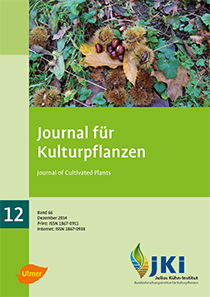Risk of dissemination of relevant phytopathogens of potato with agricultural use of sewage sludge
Keywords:
Waste water, bacterial ring rot, potato brown rot, Clavibacter michiganensis ssp. sepedonicus, Globodera, sanitization, potato wart, potato processing, potato cyst nematodes, sewage sludge treatment, phytopathogens, quarantine pests, Ralstonia solanacearum, Synchytrium endobioticumAbstract
Sewage sludge is a significant fertilizer that is generally suitable for usage in agriculture. Depending on the origin of the sewage sludge, it can be contaminated with various animal, human or plant pathogens. Based on literature data, current sewage sludge treatments were analyzed regarding their effectiveness on the inactivation of relevant pathogens of potatoes and the associated risk of their dissemination when sewage sludge is used in agriculture. According to the available literature it has to be concluded, that treatments usually applied in Germany will not be sufficient for complete inactivation of robust phytopathogens. This refers mainly to pathogens of potato that are listed in Directive 2000/29/EC, especially Synchytrium endobioticum, the agent for potato wart disease. Therefore, risky waste waters, e.g. from potato processing industries, should not be introduced in municipal waste waters or sewage sludge produced from such risky waste water should not be used in agriculture, to avoid the possible dissemination of such phytopathogens.
DOI: 10.5073/JfK.2014.12.01, https://doi.org/10.5073/JfK.2014.12.01
Downloads
Published
Issue
Section
License
The content of the journal is licensed under the Creative Commons Attribution 4.0 License. Any user is free to share and adapt (remix, transform, build upon) the content as long as the original publication is attributed (authors, title, year, journal, issue, pages).
The copyright of the published work remains with the authors. The authors grant the Journal of Cultivated Plants, the Julius Kühn-Institut and the OpenAgrar repository the non-exclusive right to distribute and exploit the work.







